Is it MECE? Use a Venn
MECE is one of the most well-known acronyms in consulting. Standing for Mutually Exclusive, Collectively Exhaustive, it is a principle used when doing any form of segmentation, to ensure no duplication (ME) or missed items (CE). This exists in a bunch of scenarios, such as solving problems, writing documents, and preparing presentations.
There are countless articles explaining what it is, so I won’t go into too much detail. These often include a Venn diagram or two to show ME and CE, but I haven’t seen them used to demonstrate the whole MECE concept - so that’s what I thought I’d do. Using examples, we can see how a Venn diagram can be used to check your segmentation is MECE.
Inspired by the excellent book Back of the Napkin, I’m going to use some hand-drawn diagrams.
The MECE Venn (the Cooktop)
I imagine MECE like a cooktop, with sets (circles) A through D, and one item in each:
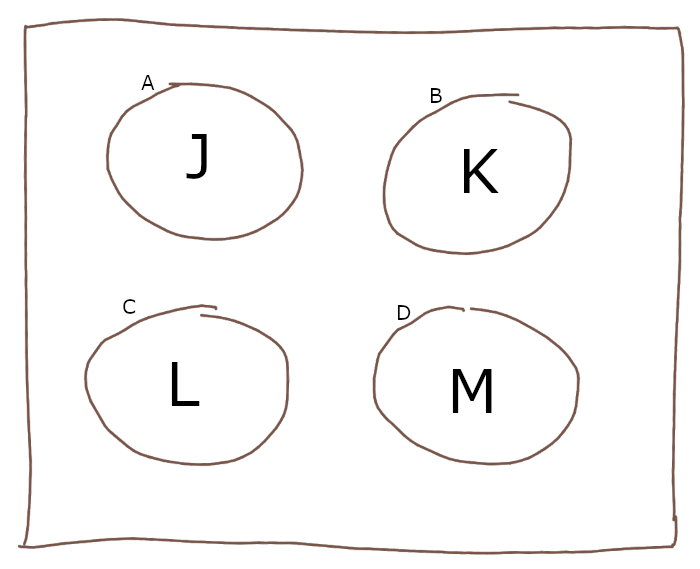
A couple of things to note, that may not be immediately obvious:
- I’ve segmented them into four. Four is a good number. More gets too complicated, and fewer can be insufficient segmentation. This is one of the few times where the rule of three seems not to always apply.
- There is nothing outside of the circles. Mathematically, (A∪B∪C∪D)’ = ∅ (the inverse of the union of A, B, C, and D is an empty set).
- All circles are similarly sized and shaped, suggesting the content is similar - you need to ensure you’re comparing apples to apples, not apples to oranges.
Examples
I learn best through examples, so I’ll do a couple here, demonstrating the MECE Venn.
Customer Research
How could you segment your customers? Some obvious ideas are age, sex at birth, and income bracket.
Say you start with your biggest customer segment, middle-income males in the 25-34 age bracket. For the next set you decide to expand it to everyone 25-34 with a middle income. Next… How about the biggest customer segment, but high income? And finally, let’s go only those in their 30s.
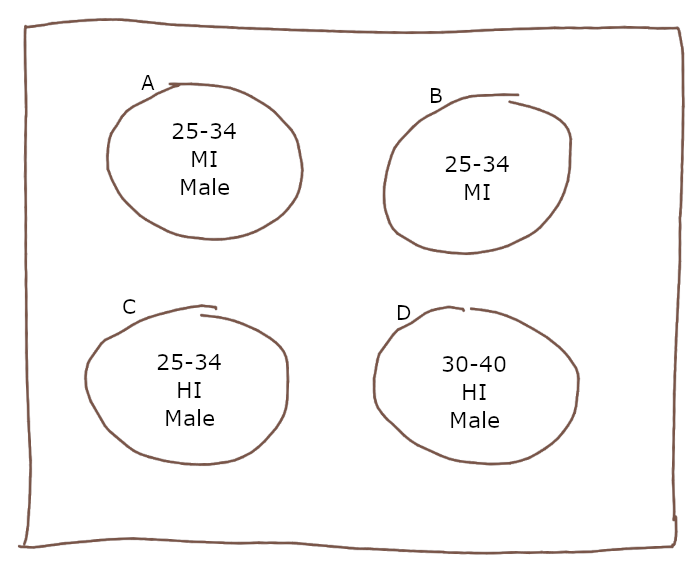
Looks good! But it isn’t MECE.
Firstly, A is a subset of B - all middle-income 25-34 males are middle-income 25-34 people. Not only is this not ME, but B could easily be double A in size, making comparisons difficult.
Secondly, there is an overlap between C and D - some customers would be in both groups. Not ME.
Thirdly, does that contain all people? Anyone under 25, anyone over 40, anyone low income, and most females - where are they? Not MC.
In reality the above Venn would look like this:
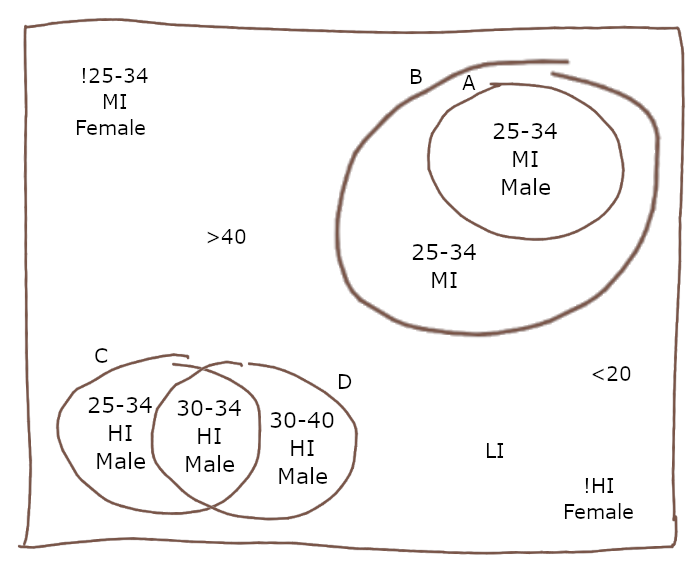
No way near as organised - and anything outside of A~D would be ignored (I’ve put in a few items, but there are more).
It turns out this was a terrible way to segment your customers!
In general, it’s better to pick a single differentiator, and make sure it includes all options. Such as age:
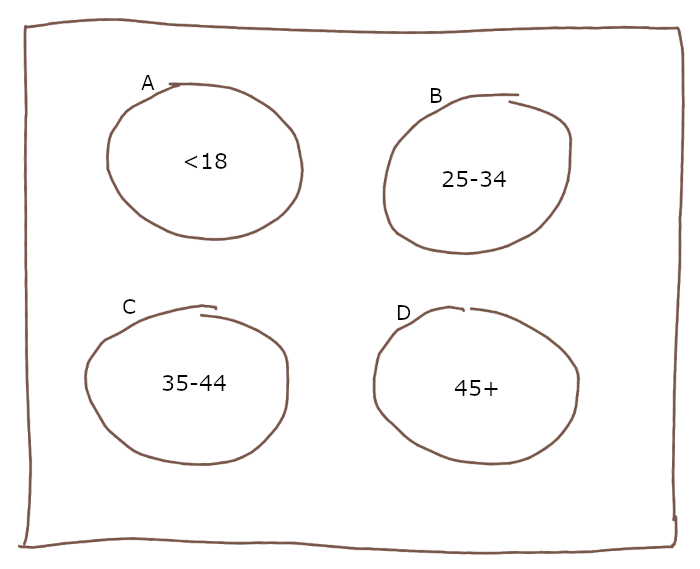
Income level:
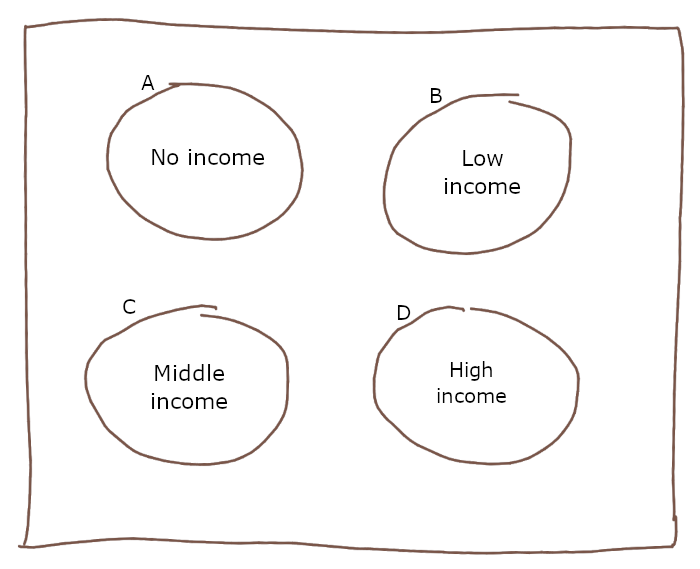
Or sex at birth:
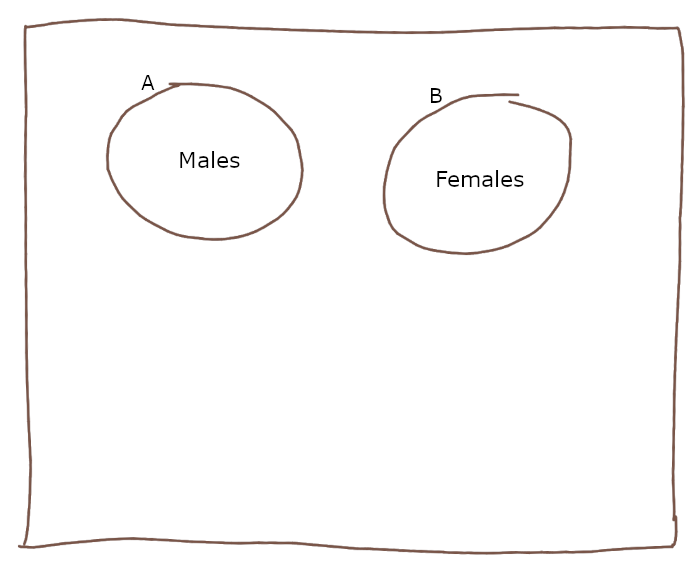
You could potentially use the catch-all “other” too, although this isn’t ideal. However, especially when there are multiple differentiators, it can be difficult to group sufficiently precisely, without ending up with bubble wrap instead of a cooktop. I could imagine using it in certain situations, such as if the other three (which are MECE) make up 95%+ of your customers, or when you’re consciously focussing on a specific customer segment - it’s better than leaving them outside the circles in no-man’s land.
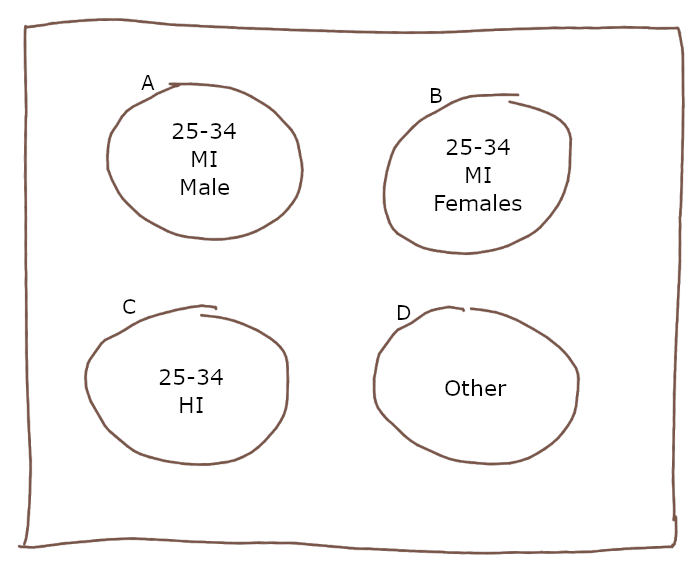
Job Application
Let’s take a different tack and do something a little less obvious. Almost everyone applies for a job at least once in their life, and MECE can be used to ensure your application is concise yet still demonstrates a range of valuable qualities
Keep in mind that while the end product may not be 100% MECE, the MECE mental model helps to structure your thoughts - Am I duplicating anything (ME)? Am I covering everything (CE)?
Also, the goal is not to list all your experiences on your CV - while that is Collectively Exhaustive, it is also exhausting for the recruiter, which will likely result in your CV in the bin. Keep it on target.
So, as we know, MECE is about segmentation. When approaching a job application, what can we segment? There are several options; however, the best way is often to look at the list of traits or attributes a company wants. So, create a list of abilities you want to demonstrate - and this is where MECE first comes in.
It starts with the data-gathering stage. It’s often good to check job adverts, the company careers website, or even ask the recruiter, what they look for. Parse through all this data to make a longlist, then reduce it to a shortlist - and this shortlist should be MECE.
Think carefully about if two things are mutually exclusive, or closer to similes. For example, problem-solving and logical thinking are closely related. Including both would fail ME.
On the other hand, be careful not to miss anything important - it’s possible company values and “fit”-type attributes are very important, but not in the job advert. For example, my company, PA Consulting, highly values ingenuity - but the job advert doesn’t directly say it is looking for ingenious people. Missing this would fail CE.
Let’s say this process results in a shortlist of problem-solving, leadership, an entrepreneurial mindset, and knowledge of the industry. These are the sets, the cookers.
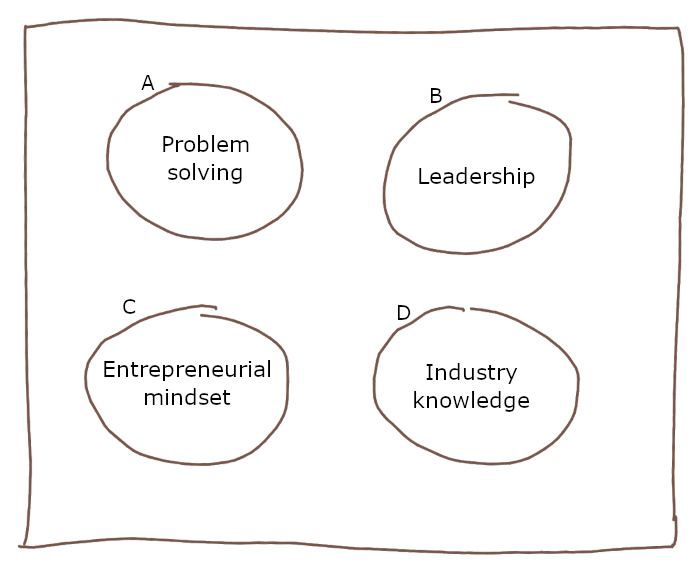
Now it’s time to say why you have these attributes, and MECE comes in again. Think of all your experiences and focus on matching one experience with one ability. While it’s not necessarily bad to have multiple experiences supporting one ability, you risk not sufficiently demonstrating all abilities (as you’ll run out of space), or being too vague by suggesting several experience supports all the abilities (resulting in a weak argument). Making it MECE makes it easy for the recruiter to resolve, which makes it more likely you’ll progress to the next stage.
For example, let’s take problem-solving. No doubt you’ve solved many problems throughout your career, be it a drop in revenue, an IT system malfunction, or a conflict with a client. It could be easy to write about all of these, to really prove you’re an excellent problem solver - but, given you have limited space, this might mean you’re unable to demonstrate your leadership abilities, which may cost you the job. So, pick the best example, ideally one with objective proof of success and closely related to the job you’re applying for. Then, move on to the next ability to demonstrate.
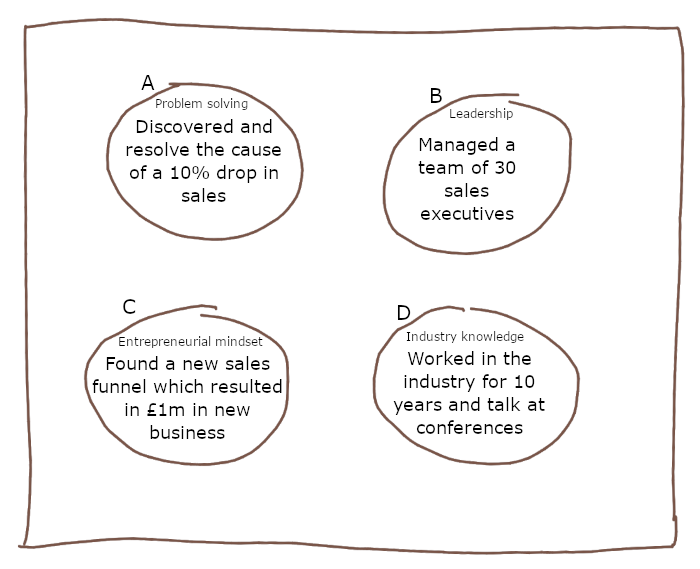
Once you have strong examples for all four abilities (not saying the four above are!), craft your application. If there is additional space or time, it might be worth including further examples - but ensure that MECE is met beforehand.
This concept also applies to interviews and beyond: ensure each example can stand alone on its strengths (Mutually Exclusive) and that you have enough examples to cover all requirements (Collectively Exhaustive).
Conclusion
When segmenting, it’s worth keeping the Cooktop in mind, and potentially sketching a quick one out as a sense-check. Are there any overlaps (non-ME)? Are there any outside the rings (non-CE)?
